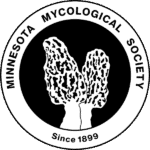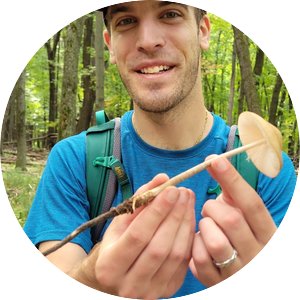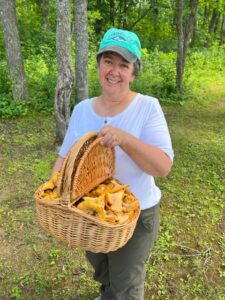Biosurveillance for Invasive Forest Pathogens in Minnesota
Invasive forest pathogens cause large economic losses and damage forested and urban landscapes. Historical examples of invasive forest pathogens that have been introduced into the United States include chestnut blight (Cryphonectria parasitica), white pine blister rust (Cronartium ribicola), and Dutch elm disease (Ophiostoma novo-ulmi). While most of the destruction by these forest pathogens is already done and cannot be reversed, it is crucial to continue to monitor for invasive forest pathogens to potentially mitigate the damage before these new pathogens have a chance to become established in the environment.
Two invasive forest pathogens that threaten Minnesota are Heterobasidion Root Rot caused by the fungus Heterobasidion irregulare and the plant and tree pathogen Phytophthora. Both were the focus of my PhD and postdoctoral work at the University of Minnesota, working with Bob Blanchette in the Forest Pathology Lab.
Heterobasidion Root Rot
Heterobasidion Root Rot (HRD) is caused by the fungus (Heterobasidion irregulare). The fungus is in the Basidiomycota and gets its name from the irregularly shaped pores on the underside of the fruiting body. HRD is a very serious disease in the southeastern United States, on the East Coast, and in several Midwestern states, including Michigan and Wisconsin. It has been considered one of the most destructive diseases of conifers in the Northern Hemisphere. HRD spreads via spores, and once infested, it moves from tree to tree by root grafts. Once the pathogen is established in a stand of conifers, it is nearly impossible to eradicate it as the fungus spreads underground.
Often, infection starts with only a few trees but spreads to neighboring trees, creating large “circles of death”. This fungus is well established in Wisconsin, as of 2024 there are 30 counties that the HRD has been detected. The pathogen has been found in southeastern Minnesota in one location. Since four of the counties that have the disease in Wisconsin are adjacent to Minnesota, there is a threat that the fungus will move into more Minnesota locations.
Surveying and Detecting Heterobasidion Root Rot
Surveying and detecting for HRD involves placing spore traps along the Minnesota-Wisconsin border. Sampling usually takes place from September to November. Our research uses three different types of spore traps:
- Windsock Spore Trap. This spore trap is an airport windsock with two greased microscope slides attached to the top-inner portion.
- RotoRod spore trap. It uses two greased rods that spin down and sample the environment around the trap for six minutes every hour.
- Burkard Cyclone spore trap. This trap continuously samples the environment where it is placed. Each of the three different spore traps has a unique collection method and is collected weekly.
Analyzing the Results
At the end of the sampling season, the collections are analyzed using a quantitative polymerase chain reaction (qPCR). This method allows us to view results in real-time as samples are being analyzed. Over the past four years of sampling, our data suggests a high probability of one or several Winona County, Minnesota, infection centers. As infection centers are found, management procedures are initiated to eradicate them.
Heterobasidion fruiting bodies at the base of a red pine and photo of the underside of a fruiting body showing irregular pores and sterile outside margin (Both of the above images are from Wisconsin DNR).
Phytophthora: Another Forest Pathogen
Another forest pathogen that threatens Minnesota’s urban and natural forests is Phytophthora. This is an Oomycete or a water mold, and while Phytophthora isn’t a true fungus, it produces fungal-like structures. Many Phytophthora species come from plants in the nursery trade since Minnesota ships in a lot of plant material from other states where pathogenic Phytophthora species may be present.
I travel to nurseries around the state to collect plant material and soil to monitor these pathogens. Once the samples are back at the laboratory, the plant material is placed onto Phytophthora-specific media called PARPH. Soil that has been collected needs an additional few steps to detect the presence of the pathogen. The collected soil is placed in a Ziploc bag, and the soil and water are added (making the soil moist but not overly wet to the point of having excess water in the bag).
A D’Anjou pear is placed in the soil and water mixture. If there is Phytophthora in the soil sample, it will attack the pear and cause a firm brown lesion. That lesion can then be cultured in PARPH and eventually sequenced to determine the species of Phytophthora present. To date, we have detected 22 species of Phytophthora, 14 of which have not yet been reported in the state. We are now evaluating the disease potential of these new isolates on woody plants with inoculation studies.
(Image) A rhododendron with typical Phytophthora symptoms, note the chocolate brown lesions on the leaves.
Biosurveillance and the early detection of plant and forest pathogens is critical to keep our forests healthy. I am grateful to be able to help make a positive impact on preserving Minnesota’s forests and natural resources. This research is ongoing and will continue with funds from the Minnesota Invasive Plant and Pest Center for the next several years.
By Nick Rajtar
My PhD focused on several aspects of fungi and plant pathogens: canker fungi associated with the emerald ash borer, detection of Phytophthora species in nurseries, forest stands, and waterways around Minnesota, and describing the Xylaria species from the Ecuadorian rainforest. As a postdoc, I will continue my work on the biosurveillance of invasive forest pathogens in Minnesota, emphasizing Phytophthora and Heterobasidion irregulare. This pathogen causes Heterobasidion Root Disease (HRD). My research aims to detect invasive forest pathogens using molecular tools and cutting-edge forest pathology techniques to ensure forest health for future generations.
Both as part of and outside of work, I enjoy being outdoors. My hobbies include backwoods camping and foraging for wild mushrooms. I collect vinyl records, frequent local microbreweries, and enjoy spending time with my wife, Izzy, and our pets: Vonnegut (a tabby cat), Chewbacca (a tortoiseshell cat), and Cedar (a German Shepherd). I am a dedicated fan of the Premier League football team, the Wolverhampton Wanderers, and national teams in Lebanon and Poland.





